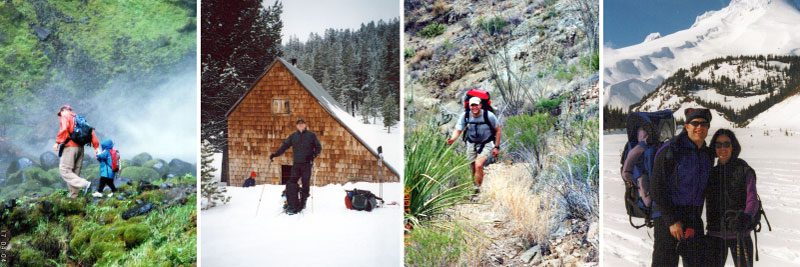Dear members and fellow catalysts,
I’m so pleased to be able to share the news of my appointment to the role of President for the Outdoor Industry Association with you. I’m incredibly grateful for the opportunity and close partnership with our Board, my dedicated staff and passionate committee members who have supported my onboarding journey over the past 7 months. Like many of you, it’s my passion for the outdoors and desire for value-based collaboration that I believe will set OIA up for success for this year and into the next decade.
I have one crystal clear priority that motivates me every day. As OIA President, I will ensure that OIA continues to be the industry’s catalyst for meaningful change. We’re an incredibly broad reaching member-led collective that stands for positive progress in every element of the industry. But we have evolved since then to be much clearer about the value of our core pillars.
OIA’s industry-defining research is a force for change allowing you to better understand the markets and the consumers you care about. In 2023, we are launching 3 new research products & services, including new consumer reports, specialty sport reports, and consumer panels.
OIA’s tireless government affairs team is a force for collective action. There are now 16 State Offices of Recreation (OREC), and we look forward to welcoming 2 more states by the end of 2023. We won’t stop until we achieve the creation of 50 bipartisan state offices, working together to protect and sustain our water, air, land, and wildlife for current and future generations. Equally, in 2023 and until it passes, OIA is committed to seeing America’s Outdoor Recreation Act (AORA) through, the single biggest piece of federal legislation that will increase outdoor opportunities by funding infrastructure and economic opportunities for gateway communities and underserved populations across the nation.
OIA is a force for sustainable growth. Since 2019, over 100 members have joined the Climate Action Corps committed to the work of reducing industry-wide greenhouse gas emissions. In 2023 and beyond, we are focused on enlisting at least 80% of the outdoor industry to meet an aggressive but achievable goal of becoming a climate positive industry by 2030. In addition, we are launching a brand-new program and working group, the Clean Chemistry Coalition, to swiftly meet the needs of retailers, manufacturers, and distributors for implementing a thoughtful and phased approach to eliminating PFAS and other harmful chemicals from outdoor products.
OIA is a force for inclusion. Through the Outdoor Foundation’s Thrive Outside Initiative, we continue to make multi-year investments in 13 community programs and countless leaders who already know what they need to harness the benefits of spending time outdoors. In addition to our work of shaping equitable access through legislative means, and upholding OREC’s guidance of partnering with tribal members as co-managers of natural resources, OIA is evolving inclusion initiatives through internal culture and collaborations and creating a diverse pipeline of people who can see themselves as our industry’s next product designers, testers and sustainability champions. We know that we will always have work to ensure the outdoor industry represents and serves all backgrounds and voices. But as a catalyst, we are committed to iterating for the vital success of the outdoor industry.
Finally, I see OIA as a force for connection. We are doubling down on valuable products and services and introducing new programs and offerings. We are modernizing operations and changing how we deliver membership experiences so that the information and services you want and need are timely, highly relevant, and personalized to your business. We are doing this so that you, our members, can be catalysts in your own right—sustainability champions, product innovators, community builders, climate change agents, or business leaders.
Notwithstanding the current economic climate, I believe that one of the reasons we lost momentum is because we didn’t connect the dots on how our work supports your business and the communities you care about. But this is what catalysts do—we “connect the dots, set things in motion, and learn continually”*. The nature of catalyst work is complex and much of it is invisibly and swiftly happening behind the scenes. We are pivoting to meet the needs of your business today but always with an eye on the future horizon.
While OIA has been charting this map for a minute, 30 minutes of years to be exact, we’re going to need your boots on the ground to help tread the path. To those of you who have been members for years and years, thank you for continuing to align your business commitments with our values. For those of you that have recently joined OIA, let me be the first to extend a very warm welcome. Your voice and support are just what this industry needs to make better and do better.
Together, we are a member-led collective and the industry’s catalyst for meaningful change.
Kent Ebersole
President
Outdoor Industry Association





